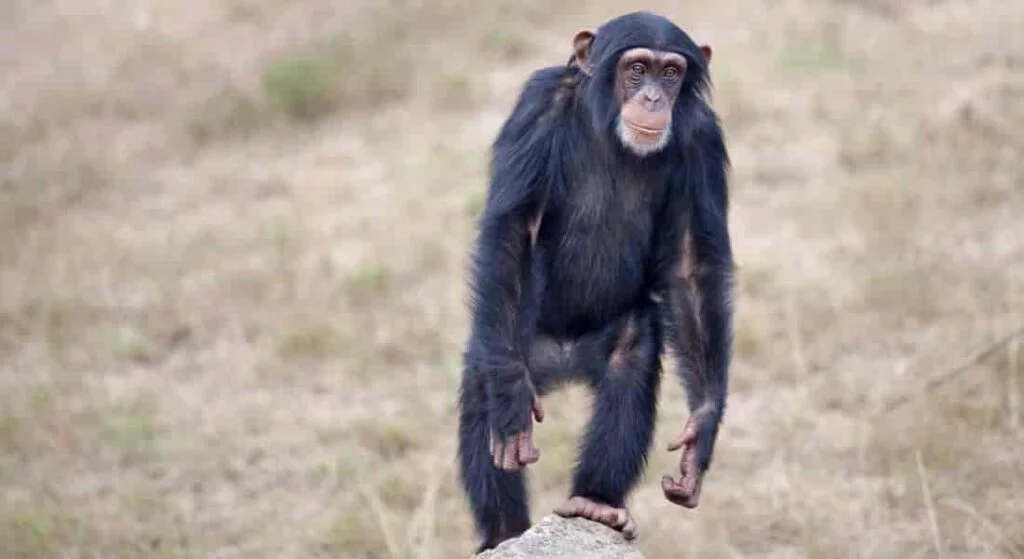
Walking, something we do without much thought, actually has a fascinating backstory that stretches back millions of years, all the way to the dawn of life on Earth.
While humans didn’t exactly invent walking, we’ve certainly put our own spin on it, making it uniquely ours in the animal kingdom. So, let’s take a stroll through time and discover how our ancient ancestors and other creatures paved the way for the way we move today.
Back in the day, our early primate relatives were all about getting around on all fours. Picture them crawling through the dense foliage, exploring the world at ground level. But then, something big happened – literally. There was this gradual shift from walking on all fours to walking on two legs, and it changed everything. Fossil records give us a glimpse into a wild menagerie of creatures, each with its own way of getting from point A to point B.
But when did this whole walking thing start? To find out, we need to rewind the clock and dive deep into the story of evolution. We’ll encounter all sorts of critters along the way, from the towering behemoths of the past to the speedy mammals of today. It’s like a grand adventure, with nature as our guide.
As we trek through time, we’ll see how our bodies have evolved to handle the demands of walking upright. Our bones, muscles, and joints have undergone some serious changes to make it all possible. However, it is also necessary to acknowledge the negative aspects of the choices. There was no difference in the difficulty of the movement in comparison with our previous way of walking, which involved backaches and ignoring coordination.
Walking Before Humans

The evolution of walking, a cornerstone of human mobility, traces its origins back to our distant aquatic relatives venturing onto land. However, the study of Earth’s earliest land walkers remains a dynamic field, with recent discoveries reshaping our understanding of their locomotion.
Consider the case of Ichthyostega1, a Devonian tetrapod long hailed as the first walker on land. However, a groundbreaking study conducted in 2012 challenged traditional beliefs by suggesting that these aquatic creatures may have utilized a unique method of movement termed ‘crutch-walking.’ This hypothesis posits that they could have relied on their forelimbs as supports, resembling the locomotion of modern mudskipper fishes.
Fast forward to approximately 290 million years ago, when we encountered Orobates2, a lizard-like creature from what is now Germany, providing early evidence of efficient walking on land. Concurrently, the emergence of Eudibamus cursoris, a small plant-eating reptile capable of bipedal running for evading predators, marks the inception of a bipedal trend that would reverberate through evolutionary history.
While bipedal dinosaurs like Tyrannosaurus rex roamed the Earth during the reign of the dinosaurs, their walking style vastly differed from the modern human gait. The distinctive human-like walk, characterized by upright posture and coordinated limb movements, emerged much later, long after the demise of the dinosaurs approximately 66 million years ago.
When did Humans Start Walking on Two Legs?
Bipedalism, or walking on two legs, was a big deal in human evolution. It changed how our ancestors got around and opened up new possibilities for them. Here’s how it all went down:
About 6 million years ago, our ape-like ancestors started standing up straight sometimes, but they still spent a lot of time in trees. Then, around 1.9 million years ago, Homo erectus3 showed up and really got the hang of walking on two legs. They had longer legs and some other body changes that made walking easier.
This change wasn’t just about standing up straight. Our ancestors’ bodies had to go through some serious remodeling. Their hips, knees, and feet had to get in the right positions, and their spines had to straighten out.
Walking on two legs brought some big advantages. It freed up their hands to do other stuff, like carrying things and making tools. Plus, it made it easier to cover long distances and explore new places.
But the transition to walking on two legs didn’t happen overnight. It took a long time and involved lots of different species, like Australopithecus afarensis, who showed some early signs of walking upright.
Why Humans Learned to Walk on Two Legs
The transition to bipedalism, or walking on two legs, remains an intriguing question in human evolution. While Charles Darwin initially proposed that walking upright freed up our hands for tool use, recent research suggests that the reasons may have been more complex.
One theory is that bipedalism allowed our early ancestors to carry food more efficiently, as they could use their hands while walking. Additionally, walking upright enabled humans to navigate the landscape with greater ease and efficiency, potentially providing advantages in foraging and hunting.
According to Patricia Kramer4, an anthropology professor at the University of Washington5, humans are naturally efficient walkers and standers, indicating that natural selection has shaped our anatomy over millions of years to optimize these activities.
As for recreational walking, such as walking for exercise or leisure, it is believed to be a more recent phenomenon in human history. While strolling became popular among the upper classes in 18th-century Britain, humans have been walking as a means of transportation and exploration since the earliest days of our existence.
Benefits of Walking

Walking offers a plethora of benefits that extend beyond physical fitness, encompassing mental well-being, immune function, and longevity. Regular walking has been linked to improved cardiovascular health, with studies showing reductions in blood pressure, decreased risk of heart disease, and enhanced overall cardiovascular fitness.
- Improves Cardiovascular Health: Regular walking can lower blood pressure, reduce the risk of heart disease, and improve overall cardiovascular fitness.
- Enhances Mental Well-Being: Walking boosts mood, reduces stress and anxiety levels, and promotes mental clarity and relaxation.
- Aids in Weight Management: Walking at a brisk pace burns calories, helping to maintain a healthy weight and support weight loss goals.
- Strengthens Muscles, Bones, and Heart: Walking engages various muscle groups, enhancing strength and promoting bone density, reducing the risk of osteoporosis6, and giving your heart more strength.
- Boosts Immune Function: Regular moderate exercise like walking can strengthen the immune system, reducing the likelihood of illness.
- Improves Joint Health: Walking is low-impact and gentle on the joints, promoting flexibility and reducing the risk of arthritis and joint pain.
- Increases Energy Levels: Even a short walk can boost energy levels, alleviate fatigue, and improve overall vitality.
- Enhances Sleep Quality: Regular physical activity like walking can promote better sleep quality and help alleviate insomnia symptoms.
- Promotes Longevity: Studies show that regular walking is associated with increased life expectancy and a reduced risk of premature death.
- Calories Burned: Walking burns calories, depending on factors like pace and duration. On average, a person burns approximately 100 calories per mile walked.
- Walking Pace: The pace of walking can vary from leisurely strolls to brisk walks, with faster paces burning more calories and offering greater cardiovascular benefits.
- Three-dimensional limb joint mobility in the early tetrapod Ichthyostega ↩︎
- What was the ancient animal Orobates? ↩︎
- Homo Erectus ↩︎
- Patricia A. Kramer ↩︎
- WHY WE WALK ↩︎
- Osteoporosis ↩︎
